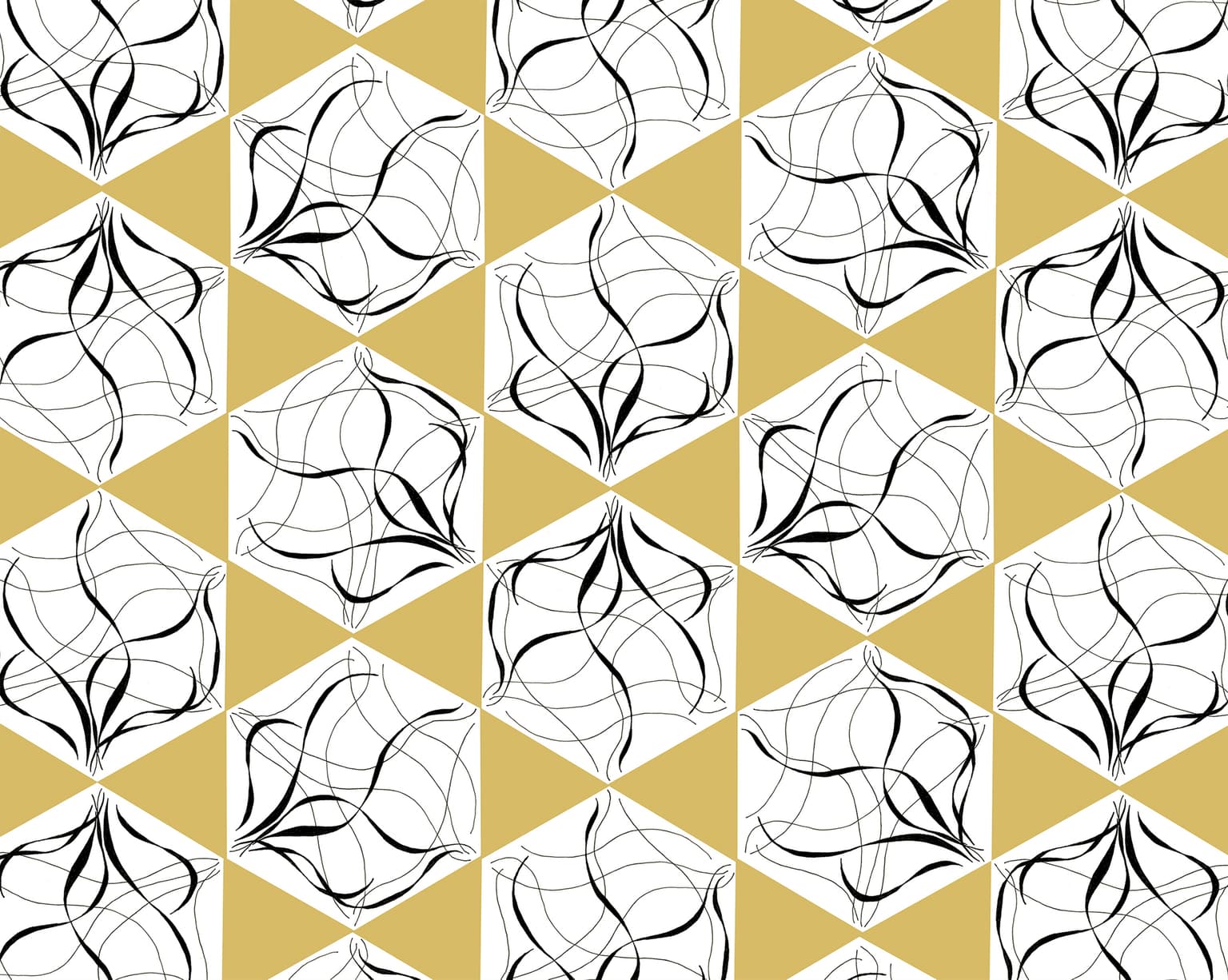2024 Joint Mathematics Meetings
Elizabeth Whiteley
Artists
Statement
Educated as a visual artist, I often draw images by hand and then use software as needed for a finished mathematical artwork. To approach a tessellation design question “How can space be created where there is none?” one can think on visual and mathematical levels. For my answer, I placed a prototile hexagon within a larger tile of a different geometric shape: a rhombus. The new shape adds design space between the hexagons. I explored regular hexagons, drawing prototile images by hand that felt both organic and calligraphic.
Artworks

Fresh Air
41.0 x 51.0 x 0.0 cm
Archival Digital Print
2023
To construct this periodic tiling, I placed my original hand-drawn image within a hexagon and then proceeded through two more generative stages using Photoshop 2024.
Generator 1 is the prototile hexagon. It becomes a rhombus when lines from the top and bottom vertices are extended along the sides of the hexagon to two new vertex points. As Generator 2, the rhombus includes the prototile and two equilateral triangles.
I applied translation, reflection, and rotation symmetry operations to four copies of Generator 2 to construct Generator 3. It consists of a rhombus with four prototile hexagons and eight beige triangles. I used it for the vertical translation symmetry to complete this visually interesting pattern.